
Touching Spring with the Mimosas
Every Spring brings an enchantment here in Provence, when the famous yellow Mimosa trees bloom on the Tanneron and in the Esterel. Located just a few kilometres from Cannes, the massif overlooking the Mediterranean is ablaze with gold, exhaling a sweet scent of honey and vanilla.
The paths on which our machines carry us are transformed into tunnels of flowers, a natural guard-of-honour standing proudly against the blue of the sky; this wonderful display is a remedy for the senses waking up from hibernation.




Native to Australia and Tasmania, the mimosa scabrella blooms in early spring in temperate climates, such as the Côte d’Azur. Brought here in 1789 by the French botanists Charles Louis L'Héritier de Brutelle and Aimé Bonpland during a trip to South America, the mimosa [for the brunch-time cocktail, see also ‘Buck’s Fizz’] has almost 600 species.

The genus has established itself here in southern France as a favourite decoration in gardens and parks, cultivated by local horticulturists making use of the pleasant temperatures and chalky soil. Its flowers are delicate and sensitive to light and touch. The Route des Mimosas, a 120km journey dedicated to the plant, welcomes thousands of sightseers every year.
We load our bikes on the regional express train from Nice, heading to Mandelieu for a loop of about 40km.
The forecast says sunshine and a gentle 15°C, a promising morning ahead. Leaving Mandelieu station, the bikes rise up the steep slope of a dirt track, set back from the dwellings that ‘flowered’ here in the mid to late 20th century. Everyone has a clear view of the sea as we ride southwards and, judging by the vehicles parked outside these modern houses, this is a resort reserved for a privileged clientele.




The Grand Duc elevates us to more than 500 metres in altitude, gradually revealing the scintillating blue from Nice to Fréjus. Our chunky tyres have left the populated areas and posh cars to find small farms belonging to local people, families who have lived up here for generations. In this natural setting, life has not yet yielded to the siren song of holiday properties, their fields of mimosas, olive trees and chestnut trees remain a much more precious commodity than euros or air-conditioning.

Fabulous trails and small winding roads that make us extremely happy take us to the small road of Bagueiret, in the direction of Les Adrets de l'Esterel. At the bottom of the valley, the path would be more suitable for mountain bikes rather than our gravel bikes, which now resemble frail dinghies upon a rough sea.
They resist the terrain entirely, so we dismount instead of flying over the handlebars. But then we find wide tracks once more, dirt boulevards that are entirely dedicated to us, at high speed, faces in the wind, we wish this would never end…




By crossing Route Nationale 7, we leave the Tanneron massif to enter the Estérel. Its characteristic red rock has propelled us into an Arizona canyon; this place would be a perfect setting for John Wayne, regardless of his choice of horse. Here we find ourselves in the promised land of gravel and mountain biking on the Côte d'Azur, the feeling is magical. Here the mimosas have given way to lentisks and arbutus trees, whose glowing fruits are just waiting to be plucked.
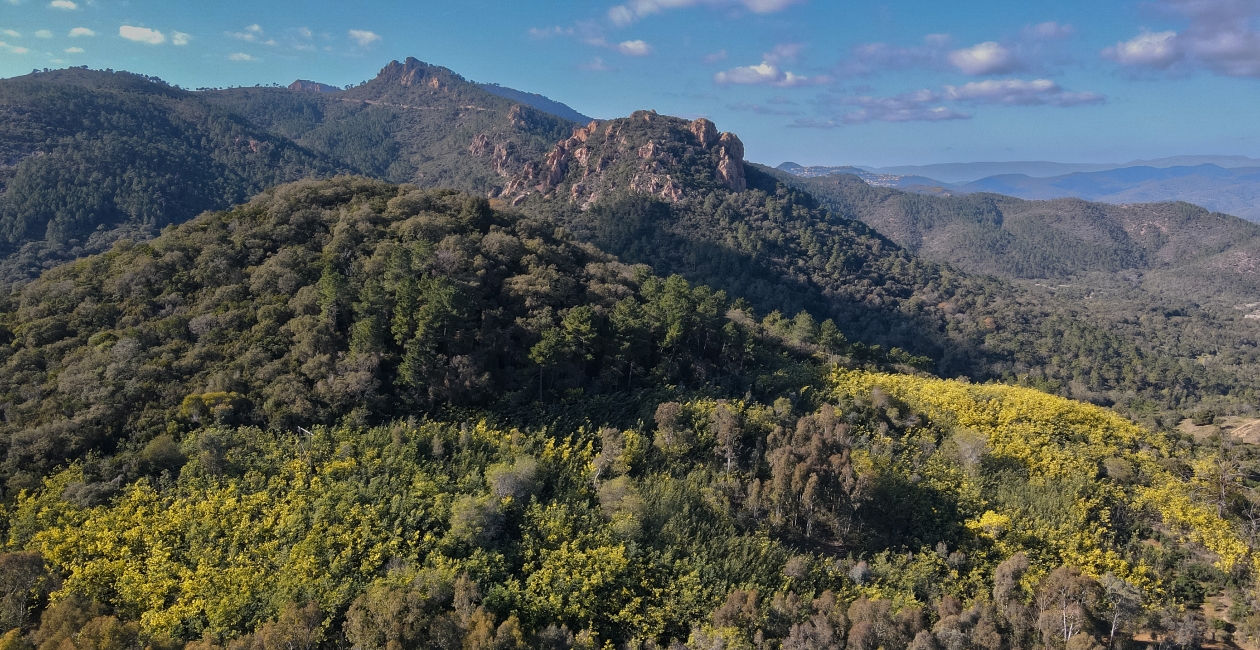

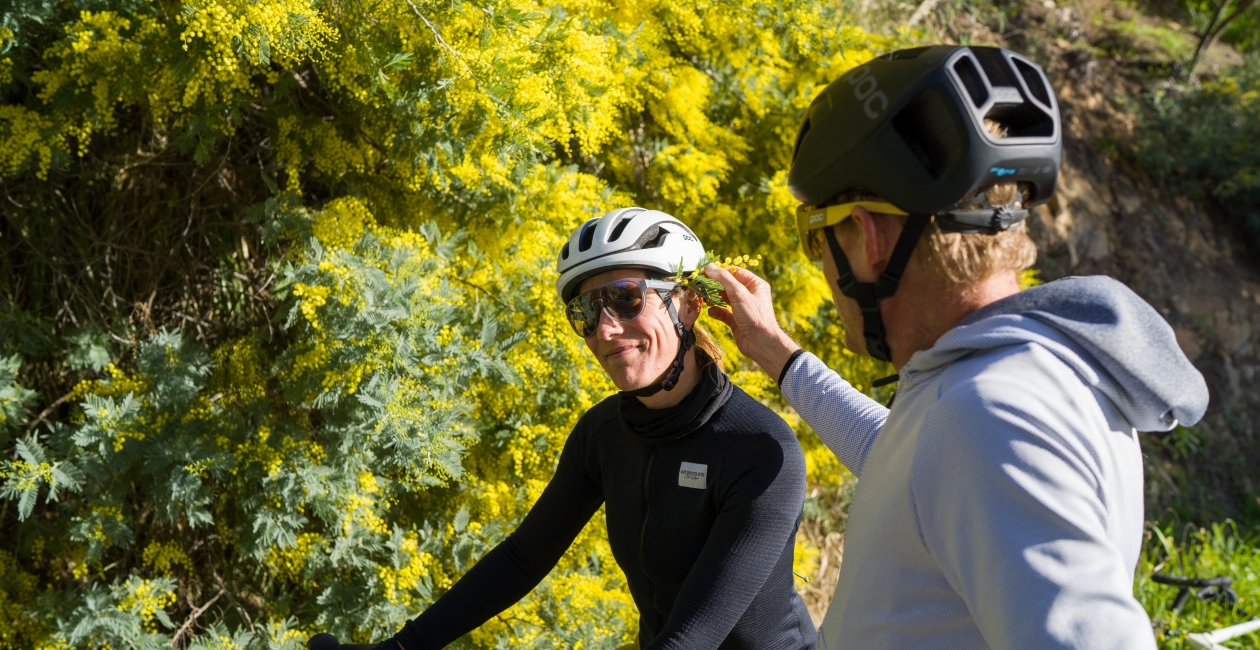
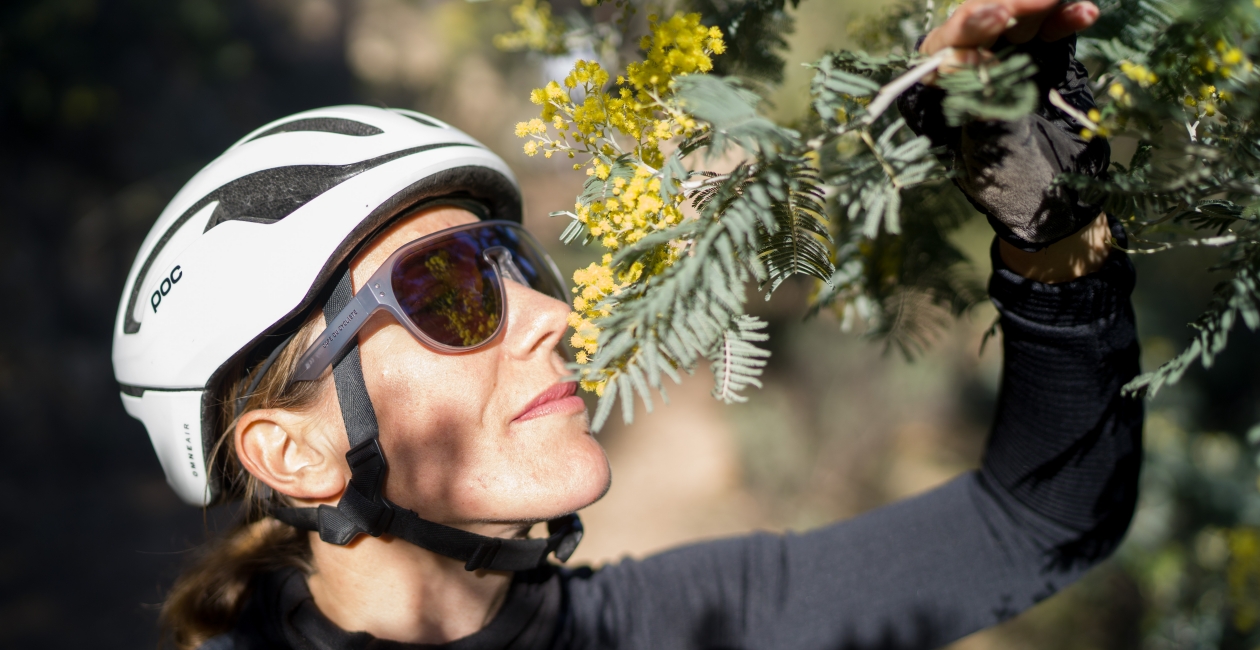
40 clicks later and more than 1200m of ascent, we are approaching the coast. Our precious mimosas have reappeared. The name derives from the Latin mimus which means ‘mime’ – as the flowers fold up when touched, which mimics animals and their sensitivity.
You cannot help but be drawn towards these enchanting plants, an invitation to enjoy the intoxication of the Côte d’Azur in all its early springtime glory.

Ride of the Month: March
May is the season of the markets in Provence, where a cornucopia of open air stalls appear each week in most towns and villages.
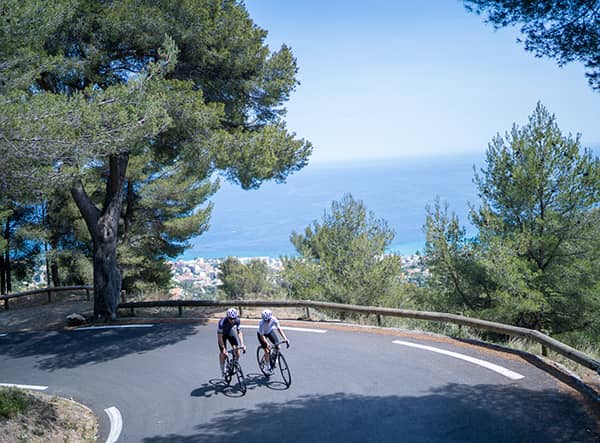
Ride of the Month: May
In the world of cycle racing, Milan–San Remo is one of the most prestigious events of the season. To win this trophy is to have your name chiseled into history. But only if you’re a man.
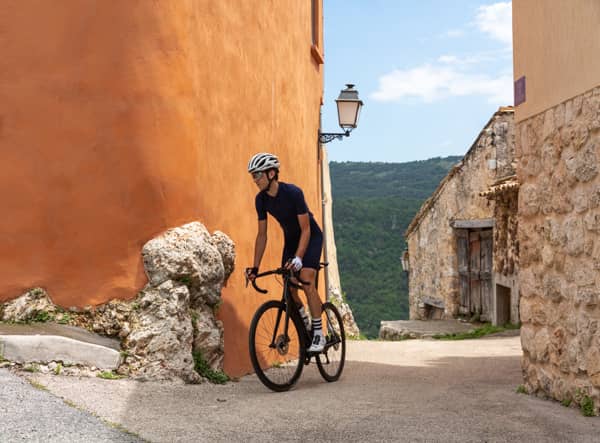
Ride of The Month: July
The Col de Vence is an unforgiving climb, renowned for it's desert-like landscape, beautiful views of the Mediterrean Sea and the absence of an escape from the blazing sun.
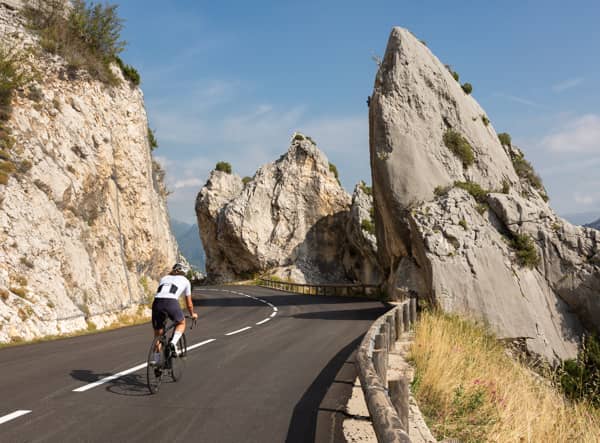
Ride of the Month: September
A 1300m climb to explore the wild animal reserve of the Monts d’Azur and ride the thrilling descent down the other side, through tunnels cut in the rock.

